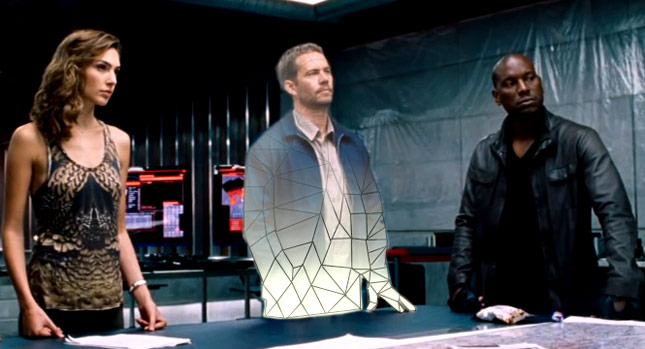Furious 7 is racing past the box-office expectations with its whopping $15.8 million opening in North America alone, the highest premier grossing of 2015 till date. However delivering the high-octane action flick was no easy task for the makers of Furious 7.
With the franchises’ co-lead Paul Walker’s sudden demise in 2013 in a car-crash, Universal Studios had to cough up a few extra millions bucks, which shot up the estimated production cost and resulting in an overall budget of a hefty $250 million. Here’s a look at how Paul Walker’s role was actually completed in Furious 7.

Contradictory to rumours of abruptly cutting loose Paul Wlaker’s character, Brian O’Conner, director James Wan completed the action-flick using the latest technology CGI approach to make a digital body double using widespread techniques involving light matching, 3D tracking and camera match-moving and finished Paul’s uncompleted scenes.
While over six VFX studios were backing the entire project it was Peter Jackson’s own post-production house, WETA Digital that took up the mammoth task. The VFX studio previously proved its mettle with the use of motion-capture technology for Caesar (Dawn of the Planet of the Apes) and Gollum (The Lord of the Rings Trilogy).
Paying an honourable tribute to the actor, the studio mostly incorporated Paul Walker’s unused real footages from the previous instalments trying to use the real Paul as much as possible.
Delivering the impossible, the studio used four actors with similar height, body of Paul Walker for live-action sequences. Paul’s brothers Caleb and Cody Walker volunteered as stand-ins especially for the close-up shots. Using the motion-capture technology their body-movements were used as a base layer and Paul Walker’s CG face was match-moved with proper lighting condition on the live-shot footage. For various live-action shooting plates, CG render passes (which provide the ability to split out certain components of a rendered image to be composited together again in a compositing application such as Nuke) were used. Apart from this, the studio had to use extensive warps and effects to get the right depth and volume of his entire body.
While this isn’t the first time, Hollywood has accomplished something like this. Last year, Phillip Seymore Hoffman died half-way between shooting the fantasy flick- Hunger Games- Mockingjay Part 1 & 2. Director Francis Lawerence digitally recreated the actor to complete the final scenes of the series. Also director Ridley Scott sought similar route for recreating Oliver Reed who died during production of Gladiator.
Certain famous actors were revived on-screen even long after their deaths including the likes of Steve McQueen and Bruce Lee for various commercials, or even the hologramic image of Michael Jackson at Billboard Music Awards, 2014 and Tupac Shakur’s hologram appearance at Coachella in 2012 with Snoop Dogg.
Also Read: 7 reasons to watch Fast & Furious 7

